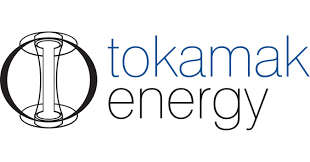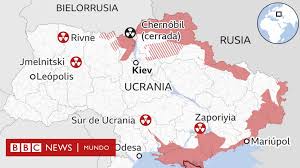The Zaporizhzhia Nuclear Power Station (ZNPS) is located near the city of Enerhodar, Ukraine, on the southern shore of the Kakhovka Reservoir on the Dnieper River. It was constructed by the Soviet Union and hosts six VVER-1000 pressurized light water reactors. The reactors are fueled with low enriched uranium, and each generates nine hundred and fifty megawatts. The total power generated is five hundred and seventy megawatts. The first five reactor went online between 1985 and 1989. The sixth reactor was connected to the grid in 1995. The ZNPS is the biggest nuclear power plant in Europe and generates twenty percent of the electricity for Ukraine. It is operated by Energoatom who also operates Ukraine’s other three nuclear power stations.
When the Russia army invaded Ukraine on the 24th of February, Energoatom shut down reactors 5 and 6 to reduce risk on the 25th of February but continued to operate the other four reactors.
On the 28th of February, Russia claimed to have captured the ZNPS. On the 3rd of March, Russian artillery strikes damaged some of the buildings at the plant. A fire broke out near reactor 1 but essential equipment was not damaged. A U.S. Energy official reported that reactor 1 was shut down safely. After an intense battle, Russians troops captured the ZNPS. They claimed at that time than there had been no increase in radiation levels. On the 4th of March, the International Atomic Energy Agency (IAEA) reported that the fire in a training building had been extinguished. The IAEA reported that the fire did not threaten reactor safety or any essential equipment.
UPDATE: A growing concern at Chernobyl which the Russians now control was that the electrical lines connecting the Chernobyl plant to the Ukrainian grid were destroyed during the fighting for the plant. The Russians took all the staff currently at the plant hostage. No one was allowed to level or come to the plant. With the power out, there was a danger that the cooling water in the nuclear fuel rod cooling pool would drain away and expose the spent nuclear fuel. This would result in spontaneous combustion leading to fire and explosions. Nuclear materials would be scattered over the landscape.
There are nuclear treaties that prohibit attacks on nuclear power plants even in wartime. If the Russians had breached the containment vessels or the nuclear fuel cooling pools at either Chernobyl or ZNPS, it could have been a disaster not just for Ukraine but for the whole of Eastern and Western Europe. At the urging of the IAEA, the Russians are now allowing work parties to repair the electrical power lines.
I have a list of forty-five reasons that nuclear power is a bad idea. One section of the list dealt with physical threats to nuclear power plants which could include the following. Accidental or deliberate breaching of containment, terrorists seizing nuclear power plants and threatening to blow them up or using nuclear fuel to build dirty bombs. Troops trying to barricade themselves in nuclear power plants would invite their enemy to attack the power plant. When I wrote the list years ago, these were all hypothetical scenarios. Now, the Russian invasion of Ukraine has made this danger very real.







